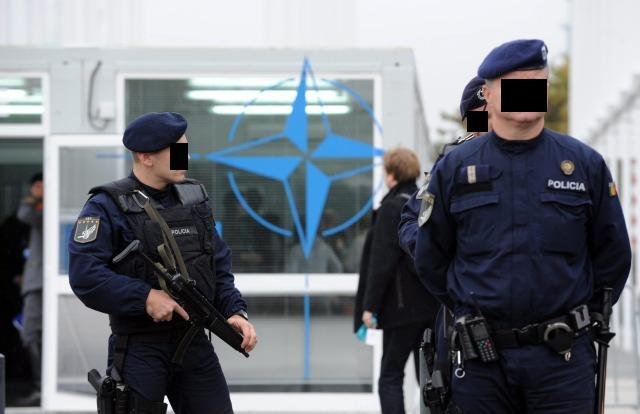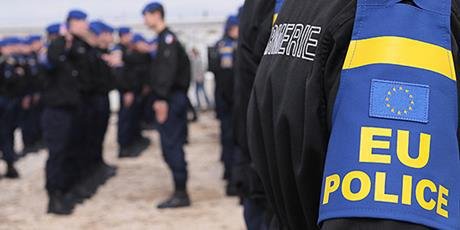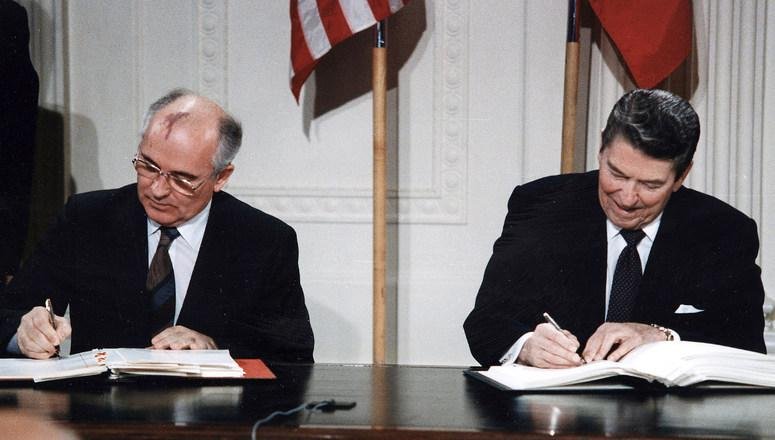Atlantica Magazine
Young professionals are often an unheard voice in policy discussions. More often than not, however, it is their insights that we need to break hardwired, outdated ideas about foreign policy and transatlanticism. Atlantica aims to amplify the voices of the young generation of transatlanticists. Our team is committed to publishing your article. Each issue features three articles per month on a theme selected by the Atlantic Forum team, in conjunction with NATO’s Public Diplomacy Division.
Find our latest
Atlantica publications here:

Mapping the Kremlin's hostile information operations against NATO in the context of the COVID-19 pandemic
The COVID-19 pandemic has provided hostile actors with a multitude of possibilities to spread and amplify disinformation. Several narratives have revitalized long-running campaigns aimed at weakening adversaries and are not directly health-related. The Kremlin has seized the opportunity to target the EU and NATO, as well as aspiring member states, in order to polarize societies and foment hostility within these alliances. NATO has faced disinformation attacks particularly in the Baltic states, where the Alliance has been portrayed as an unreliable partner, malign actor aiming to misuse the pandemic for Washington’s goals, and a hotspot of COVID-19. Accompanying narratives have highlighted a positive image of Russia, largely relying on the points Moscow scored after delivering humanitarian aid to a number of states.
These narratives are prominently seen in Georgia and Ukraine, which have seen cross-coordinated campaigns promoting conspiracy theories identifying COVID-19 as an American bioweapon—yet another revitalization of older rhetoric. These campaigns are excessively seen in the occupied territories of both these states, where anti-NATO sentiment is consistently identified as an external threat, a narrative that is heavily utilized by Moscow. Both states have also been targeted with messages aimed to subvert their potential accession to the Alliance.
In promoting anti-NATO disinformation, the Kremlin relies on a complex communication system that far exceeds the reach of state-controlled TV and exploits local outlets as well as pro-Russian agents of influence. The long-established nature of this sophisticated system—along with the key narratives it disseminates—has provided ample opportunities for NATO and its member states to design an adequate response over the years. Such a response would require proactive positions, diversification of communication channels, and specifically targeting groups vulnerable to disinformation.

Closer EU-NATO cooperation: Overcoming political deadlock through the development of modus operandi
This paper examines modes of cooperation between the EU and NATO that were established in 2016 by using the multi-level analysis approach to inter-organisational relations. Such an approach provides a ‘reality check’ for the dynamics and dysfunctions of EU-NATO cooperation at different levels of collaboration, from the international and member state levels, to individual, bureaucracy, and inter-secretariat levels. Among the five levels that are explored, four prove to strengthen EU-NATO cooperation. The enhancement of EU-NATO relations since 2016 has certainly been driven by exogenous crises, as well as overlapping membership and resources, which define the international system level. Due to the Turkey-Cyprus political deadlock, the member state level has proven to hinder EU-NATO cooperation. In contrast, political deadlock also stimulated the development of informal ties between the EU and NATO. This is clearly visible at the individual level, where fruitful relationships between the High Representative of the Union for Foreign Affairs and Security Policy and NATO’s Secretary General, as well as their respective cabinets, have contributed to promoting greater EU-NATO cooperation. Furthermore, interactions between military staff in operational theatres proved to be more successful than the efforts of the NAC and PSC ambassadors in overcoming, to the extent possible, member state-level political deadlock. The bureaucracy level ensured the functionality of EU-NATO cooperation that lead to the creation of a common culture between both organisations. Finally, the inter-secretariat level move EU-NATO cooperation from ‘ad hoc-ism’ towards strategic advancement, as national consent is required for formalisation.

NATO and the EU: The need for a common counter-terrorism strategy
In light of recent terrorist attacks, such as Christchurch and Halle, which have spurred copycat terrorism in Europe and the world, a common counter-terrorism strategy between the EU and NATO has never been so important. In 2019, EU member states reported a total number of six completed, failed, or foiled right-wing terrorist attacks. This marked a stark rise in right-wing terror attacks in Europe. Online spaces in particular have provided these groups with a wide range of propaganda platforms to strengthen and build relations with like-minded individuals abroad.[i] However, while the joint declarations of the EU and NATO in 2016 and 2018 institutionalised a strategic cooperation in the area of “hybrid threats”, a formal cooperation structure that combines both the areas of counter-terrorism and cyber security remains absent.[ii] This is particularly exacerbated by a focus on non-domestic terrorism, and the lack of a common definition of the term “right-wing terrorism” that includes differentiated methods that consider the reactionary effect it has had on society. These considerations need to be consolidated into policy-making and cooperation between the EU and NATO in order to prevent perpetuating a cycle of violence.

What can NATO learn from EU CSDP missions and operations?
It is clear now more than ever that managing crises successfully is difficult. Despite the scepticism around the effectiveness of EU missions and operations, joint forces of both the European Union and NATO have worked together on several occasions, sometimes with great success. This paper highlights the theoretical aspects of the EU’s Common Defence and Security Policy (CSDP) that could be useful in combination with NATO hard-power capabilities. The main focus will be around the “regional” and “comprehensive” approaches expressed in the European Global Strategy (EUGS) and their role in creating a wider strategy to manage crises. After the launch of NATO2030, these approaches could be helpful for developing NATO’s strategy and giving a unique, outside perspective of the organization.

Hybrid threats: An avenue for a more solid NATO-EU cooperation
The concept of hybrid threats has gained considerable coverage within the repertoire of both the European Union (EU) and NATO during the last decade, particularly after Russia’s illegal annexation of Crimea in 2014. The blended tools and techniques that Russia has implemented in Crimea have shown that the new security challenges of the twenty-first century no longer fit into the traditional scrapbook of warfare. They are wide, more diverse, and multi-faceted than in the previous century, and empowered by the current technological breakthrough. Crimea and, above all, the current COVID-19 pandemic has made clear that systemic vulnerabilities could effectively be exploited by malicious actors, leading to a substantial erosion of the quality of political institutions in democracies and their trust in what has been labelled as the liberal order. In this paper, I will examine the state of the NATO-EU cooperation in terms of combating hybrid threats and sketch some possible ways to strengthen it, particularly in the context of the COVID-19 pandemic. Nevertheless, in order to examine the roots of cooperation between NATO and the EU and to gain a clearer insight into the subject, I would like to briefly conceptualise the term “hybrid threats” according to both organisations.

Russia and NATO in a post-INF world: One year after withdrawal
Hailed as a landmark decision on US-Soviet arms control, the 1987 Intermediate-Range Nuclear Forces Treaty (INF Treaty) banned land-based missiles with a range of 500-5,500 kilometres. That is, until in August 2019 when President Trump, supported by his NATO allies, withdrew the US from the treaty, citing Russia’s development of the Novator 9M729 land-based cruise missile as a violation of the agreement’s range stipulations. Trump’s decision came after more than a decade of mutual allegations from the US and the Russian Federation, the rise of non-signatories as credible missile powers (most notably China and North Korea), and the development of various new technologies (including hypersonic missiles, nuclear-powered cruise missiles, and nuclear-capable underwater drones). The termination of the INF Treaty has brought the issues of missile balance and deterrence back to the heart of European security, bearing direct consequences for security in the Baltic region, where Russia is continually increasing its anti-access area-denial (A2AD) capabilities, and within the Black Sea region, where Russia is modernising its frigates to deter the deployment of American arms. It is against this backdrop that I shall reflect on NATO-Russia relations since the demise of the INF Treaty, the prospects for future arms control talks—particularly with regard to New START, which will expire in 2021 unless the US and Russia agree to extend it—and NATO’s options for fostering stability in Europe in the face of Russian capacity-building.

One year post-INF: A moment for NATO evolution
On Armistice Day in 1948, American General Omar Bradley stated, “[w]e have grasped the mystery of the atom and rejected the Sermon on the Mount. The world has achieved brilliance without conscience. Ours is a world of nuclear giants and ethical infants.” General Bradley’s cautionary message on the 29th anniversary of the end of the First World War encapsulates the threat of nuclear annihilation. On 8 December 1986, the Intermediate Range Nuclear Forces Treaty (INF Treaty) was signed by U.S. President Ronald Reagan and Soviet General Secretary Mikhail Gorbachev. The INF treaty removed all intermediate range missiles from Europe, displaying an intention to de-escalate nuclear tensions. Despite serving as a bulwark for peace for over thirty years, U.S. President Donald Trump withdrew the United States from the INF treaty in August 2019, citing numerous violations by the successor state to the treaty—Russia.
In the post-INF world, General Bradley’s warning is prescient. The North Atlantic Treaty Organization (NATO) is fractured and disunited. Russia’s unperturbed aggression in Eastern Europe, the Middle East, and Africa demonstrate growing chasms in the Alliance. Likewise, Russia’s stated policy that it retains the option to respond to any conventional attack with nuclear weapons is troubling. Without a strong alliance, NATO’s deterrence capability dissipates. Furthermore, NATO’s weakness has encouraged Russian malfeasance and defection from the INF Treaty requirements. The subsequent U.S. withdrawal evidences the inherent fragility of the international system based in international law. The system requires commitment from states to uphold agreements to ensure legitimacy.

Dual-track approach reinterpreted, or: How NATO learns to stop worrying and love the dialogue
When evaluated with many ongoing theoretical debates on decreasing convergence within the international system, many recent developments—such as the termination of the INF Treaty, the US decision to withdraw from the Treaty on Open Skies, and controversies regarding the future of New START—directly interact with the future of NATO-Russia arms control. This research intends to touch upon the post-INF Treaty arms race, revisiting the two-track approach and a wider arsenal of interaction and norm-building. In the past, consistent interactions with external and internal stakeholders, effective transparency/validation mechanisms, and putting emphasis on shared values worked well for building the Alliance’s normative power. Yet today, an analysis of a post-INF Treaty arms control framework between the Alliance and Russia could not ignore two unprecedented challenges: 1) proliferation of newly developing strategic arms technologies; 2) moving beyond the hard bipolarity of the past, considering international, national, as well as private/civil society actors in the equilibrium. A new dual-track approach is indeed difficult to grasp with all the ambiguities these newly developing capabilities and players bring to the international legal and security landscapes. But for the very same reason, it is essential to discuss "dialogue" once again as a second track along with "deterrence”. With the rapid emergence and increasing availability of weapons technologies, neither NATO nor Russia would gain definitive advantage in strategic competition in the short to medium term. Therefore, it is necessary to ask if guarding the rules of the game, mutually perceiving emerging concepts, and enhancing dialogue and norm-building efforts would ameliorate NATO’s persistence and deterrence.

Airspace safety over the Baltics
NATO’s Baltic Air-Policing mission was launched in 2004, since then, countless Russian military aircraft have been recorded breaching Baltic airspace. The Latvian, Lithuanian, and Estonian governments have condemned the reoccurring overflights, yet this has not limited the number of regular Russian airspace breaches. In 2019, NATO air-policing fighter jets had to scramble 200 times, showing the need for NATO’s presence in the region to ensure that the independence of the three Baltic states is not threatened. This article argues that the regular breach of Baltic airspace is a tool used by Russia to exert pressure on the Baltic states and NATO. This is only one of many weapons at Russia’s disposal, used alongside political pressure, propaganda, and economic dependence. Whether or not this form of Russian aggression can be considered as hybrid warfare, is of utmost importance for the sovereignty of the Baltic states to limit the number of airspace breaches. The aim of this article is to discuss possible remedies for this situation, offering means for how to deal with the problem in both conventional and non-conventional manners.

Partnership policy and the international community
Constructivism argues that identities are “collective meanings” that determine state interests and actions. This perspective holds the idea that “institutionalism is a cognitive process” of internalizing state identities and interests. As these identities and interests may trigger conflict in the international arena, shared values may, most likely, motivate states to act together. Within this context, the Partnership for Peace Program initiated in 1994 gave new impetus to NATO processes by providing a partnership scheme partly independent of the membership context. In this way, NATO has aimed to accelerate the international peacekeeping process without obliging or presenting membership as a precondition of the partnership.
The Partnership for Peace Program strives to fill the power vacuums formed after the collapse of the Soviet Union by assembling states around shared values such as freedom, justice, and peace through democracy. Based on this NATO may transform partner states’ identities and interests through socialization. According to this policy, which also overlaps with democratic peace theory, it is thought that sharing the same values will appease the mistrust between states that may arise from discrepancies. Accordingly, the Peace for Partnership Program is likely to prove that “democracies do not wage war against each other.”
Within this frame, NATO’s partnership policy will be analyzed as an essential motive of overcoming the bias that NATO is based on deterrence. Partnership is integrative and consolidative in form, away from exclusionist ontology.